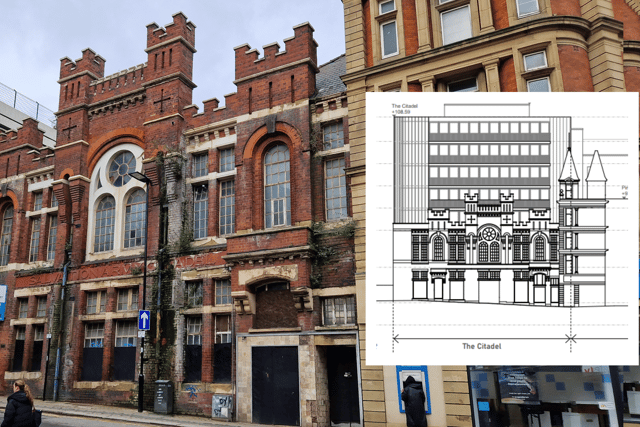Salvation Army Citadel: Demolition plan for listed building - apart from front - to make way for offices
and live on Freeview channel 276
The Salvation Army Citadel in Sheffield could be demolished - and only the facade retained - under plans for an eight-storey office.
The landmark listed building on Cross Burgess Street would form the front of a new building which would meet demand for Grade ‘A’ office space in the city centre, according to owner Robert Hill.


Advertisement
Hide AdAdvertisement
Hide AdIt would also "stack up financially" after 12 previous schemes over 17 years failed to fly - including an Apple shop.
The Citadel opened in 1894 and was used by the Salvation Army for more than a century. It has been empty since 1999. Mr Hill last year described it as the "worst" building in the area after a spate of developments in the council’s £470m Heart of the City II scheme.
He is submitting a pre-application document to Sheffield City Council to see if the idea is acceptable in principal before filing a full planning application.
He said: "I think it’s a cracking scheme. It would sit well, everything around dwarfs the Citadel at the moment. I’ve been involved in it for years and I couldn’t see the wood for the trees. This is something bold and radical."
Advertisement
Hide AdAdvertisement
Hide AdMr Hill said there had been a string of developments in Sheffield recently that retained only the facade of historic buildings recently .


They include the Radisson hotel which saw the retention of a huge Victorian frontage on Pinstone Street, Cambridge Street Collective, which kept the front of Henry’s bar, and the Isaac's Building, Laycock House and Athol House on Pinstone Street.
The redevelopment of Leah’s Yard workshops on Cambridge Street saw the controversial demolition of the historic Tap and Tankard pub and Chubby’s takeaway, with only the frontage surviving.
Comment Guidelines
National World encourages reader discussion on our stories. User feedback, insights and back-and-forth exchanges add a rich layer of context to reporting. Please review our Community Guidelines before commenting.